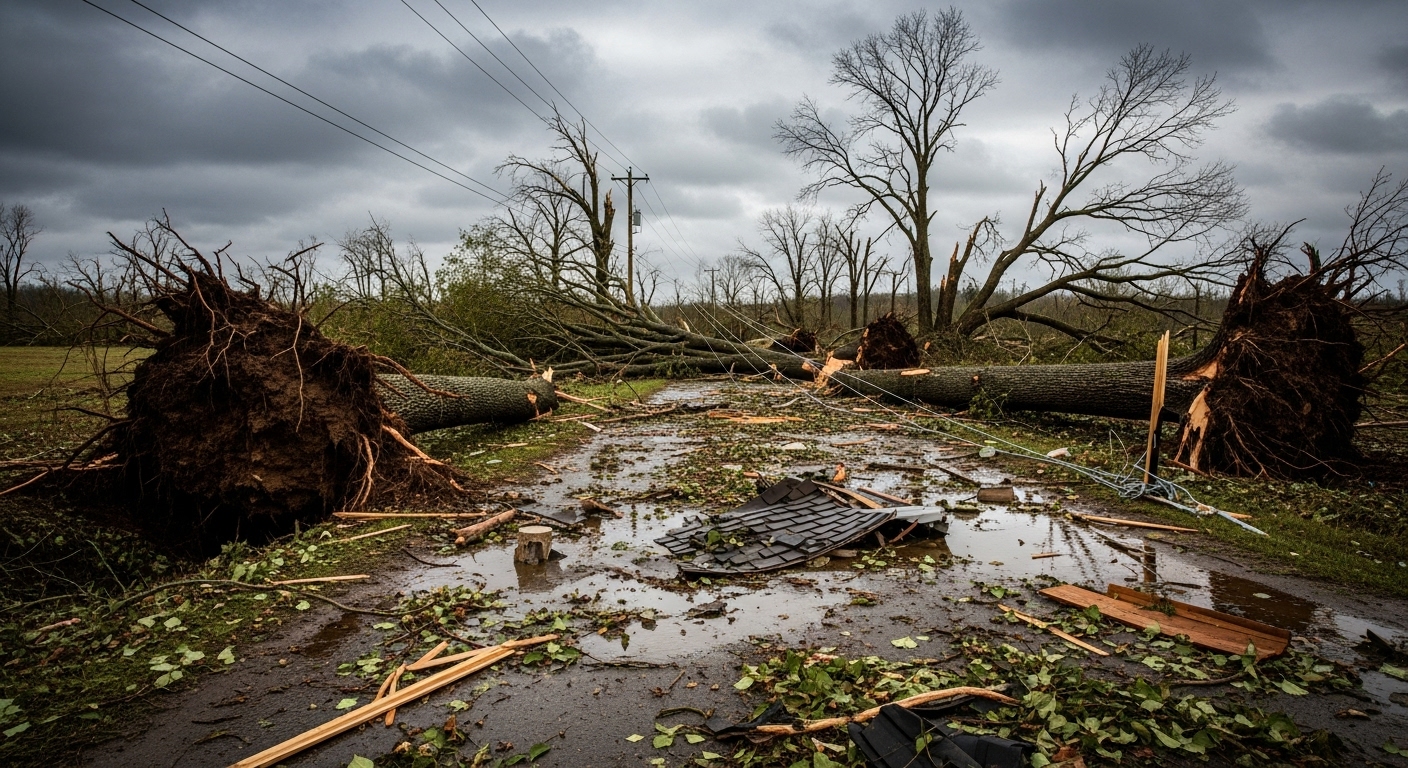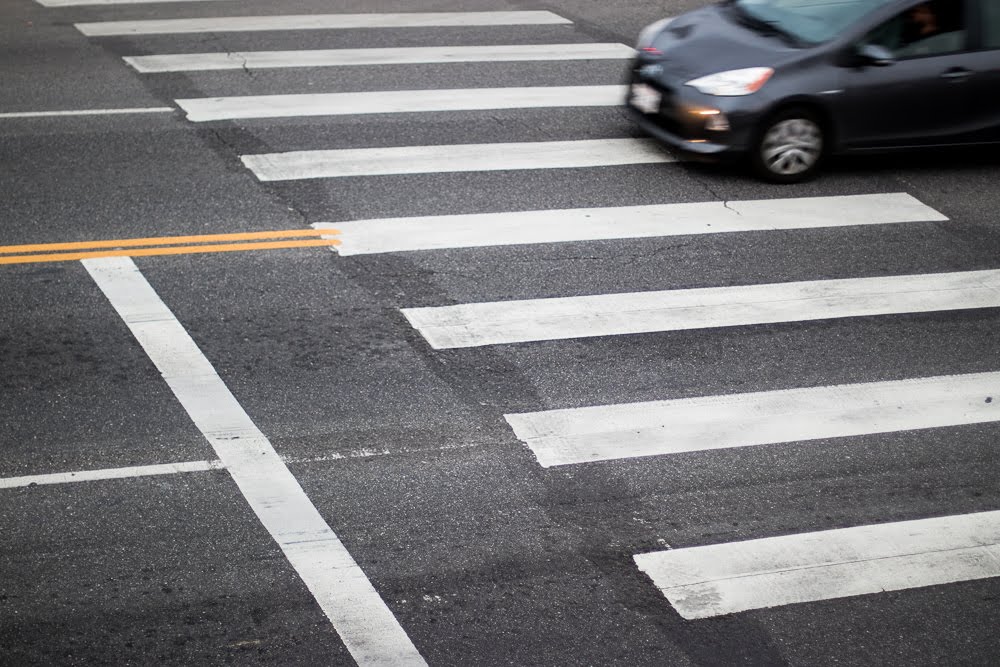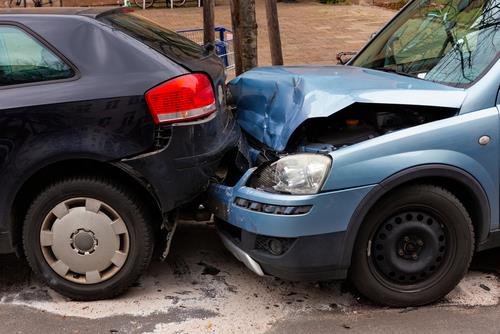Liability for Fallen Trees & Debris After Storms: Who Pays When Branches Injure You?
When a fallen tree or branch injures you, liability depends on whether the property owner was negligent in maintaining the tree before it fell. Property owners are legally responsible for injuries caused by trees they knew or should have known were dangerous, even if a storm triggered the final collapse. The key is proving the owner failed to address obvious warning signs like dead branches, visible rot, or previous complaints about the tree’s condition.
Understanding who pays for your injuries involves complex questions of property ownership, insurance coverage, and state-specific laws. Multiple parties might share responsibility, including private property owners, government agencies, and utility companies. Each has different legal duties and insurance requirements that affect your potential compensation.
This article explains how liability works in tree injury cases, what damages you can recover, and the critical steps you must take to protect your legal rights across Alabama, Mississippi, Florida, and Georgia.
What Is Liability When a Tree Injures You?
Liability is legal responsibility for paying damages when someone gets hurt. This means if a property owner’s carelessness causes a tree to fall and injure you, they must pay for your medical bills, lost wages, and other losses.
The law calls this premises liability. Property owners have a duty to keep their land reasonably safe for visitors. When they fail to remove dangerous trees or maintain their property properly, they become liable for fallen tree injuries in premises liability cases.
You need to prove four things to win your case:
- Duty of care: The owner had to keep their property safe
- Breach of duty: They failed to inspect or remove a hazardous tree
- Causation: Their negligence directly caused your injury
- Damages: You suffered real harm like medical bills or lost income
The key question is whether the owner knew or should have known the tree was dangerous. If a reasonable person would have spotted the problem and fixed it, the owner is likely liable.
Who Is Responsible When a Tree Falls After a Storm?
Many people think storms automatically excuse property owners from responsibility. That’s not true. The real question is whether the tree was already dangerous before the storm hit.
A healthy tree that falls during a hurricane might be nobody’s fault. But a rotted tree that falls in a regular thunderstorm? That’s likely the owner’s responsibility. Courts look at the tree’s condition before the weather event to determine who is liable for a fallen tree.
Here’s how different scenarios typically play out:
| Scenario | Who’s Responsible | Why |
|---|---|---|
| Healthy tree falls in severe storm | No one (Act of God) | Unforeseeable natural disaster |
| Dead tree falls in normal weather | Property owner | Should have removed obvious hazard |
| Diseased tree falls during storm | Property owner | Pre-existing danger made it vulnerable |
| Rotting tree falls in any weather | Property owner | Visible decay ignored |
The storm doesn’t matter if the tree was already a ticking time bomb. Property owners can’t use bad weather as an excuse for ignoring obvious dangers on their land.
What Is an Act of God Versus Negligence?
An Act of God is a natural disaster so extreme that no reasonable person could have prevented the damage. The New Jersey legislative page you provided also addresses this term: S166 (NJ bill text).
Negligence is when someone fails to use reasonable care to prevent harm. If you ignore a dying tree on your property, you can’t blame God when it falls on someone. The storm might have been the final push, but your carelessness created the real danger.
Insurance companies love to claim “Act of God” to avoid paying claims. Don’t let them fool you. If the tree showed signs of disease or damage before the storm, the property owner is still responsible for fallen tree branches that cause injuries.
Signs of Negligence a Jury Recognizes
Courts look for clear evidence that a reasonable person would have seen the danger:
- Dead branches hanging over walkways or parking areas
- Visible rot, cavities, or fungus growing on the trunk
- Trees leaning significantly after construction damaged their roots
- Previous complaints from neighbors about dangerous branches
- Large limbs that had already fallen from the same tree
- No inspection or maintenance program for older trees
If any of these warning signs existed, the property owner should have taken action. Their failure to act makes them liable, regardless of what weather triggered the final collapse.
Who Owns the Tree and Why It Matters
Tree ownership follows a simple rule: whoever’s property contains the trunk owns the tree. This matters because the owner is responsible for maintenance and potential liability, even if branches hang over your yard.
If the trunk sits exactly on a property line, both neighbors usually share ownership and responsibility. This is called a “boundary tree,” and both owners must agree on major decisions like removal.
- Your property: You own it and must maintain it safely
- Neighbor’s property: They’re responsible if their negligence hurts you
- Property line: Both owners share responsibility and liability
- Public property: The city, county, or state agency is typically responsible
Ownership determines who pays when something goes wrong. If your neighbor’s tree falls and injures you, their insurance should cover your damages if they were negligent in maintaining it.
Do Governments or Utilities Share Liability?
Yes, government agencies and utility companies can be held liable for tree-related injuries. Cities must maintain trees in parks and along streets. Utility companies must trim branches that threaten power lines.
However, suing the government involves special rules and much shorter deadlines. You typically must file a formal notice before you can even start a lawsuit. Miss these deadlines, and you lose your right to compensation forever.
Government Notice Rules by State
Each state has different requirements for notifying government agencies of your claim:
| State | Notice Deadline | Requirements |
|---|---|---|
| Alabama | 6 months | Written notice to city or county clerk |
| Mississippi | 1 year | Formal notice of claim required |
| Florida | Varies by entity | Pre-suit notice rules differ |
| Georgia | 6-12 months | Ante litem notice to agency |
These deadlines are much shorter than regular personal injury claims. If you think a government agency is responsible, contact a lawyer immediately. Waiting even a few months could destroy your case.
Does Insurance Pay for Fallen Tree Injuries?
Property owners’ homeowners insurance usually covers liability for injuries on their land. This includes damages from fallen trees if the owner was negligent in maintaining them. However, insurance companies often fight these claims by arguing the tree fall was an “Act of God.”
Your own insurance policies may also provide coverage depending on how you were injured. Understanding which policies apply helps you get the compensation you deserve.
Types of Insurance That May Apply
Multiple insurance policies could cover different aspects of your tree injury:
- Property owner’s liability insurance: Primary coverage if they were negligent
- Your auto insurance comprehensive coverage: If the tree hit your car
- Your health insurance: Covers immediate medical treatment
- Umbrella policies: Additional coverage above standard homeowner limits
Don’t rely on the property owner’s insurance company to treat you fairly. They work for the property owner, not you. Having your own lawyer levels the playing field and ensures you get maximum compensation.
What Damages Can You Recover?
You can recover money for every loss caused by the property owner’s negligence. In legal terms, these losses are called “damages.” Fallen tree accidents often cause severe injuries because of the massive weight and force involved.
The law recognizes both economic damages (financial losses) and non-economic damages (pain and suffering). You shouldn’t have to pay for someone else’s carelessness.
Types of Recoverable Losses
You can seek compensation for multiple categories of harm:
- Medical expenses: Emergency care, surgery, physical therapy, future treatment needs
- Lost wages: Time off work and reduced earning capacity if permanently disabled
- Pain and suffering: Physical pain, emotional distress, loss of life enjoyment
- Property damage: Vehicle repairs, damaged personal belongings
- Permanent injuries: Ongoing disability, scarring, or physical limitations
The more severe your injuries, the higher your potential compensation. Don’t accept a quick settlement without understanding the full extent of your damages, including future medical needs, which experienced personal injury attorneys can help evaluate.
What To Do After a Tree Branch Injures You
Your actions immediately after a tree injury can make or break your legal case. Your first priority is always your safety and medical care. Even if you feel fine, get checked by a doctor – adrenaline can mask serious injuries like concussions.
Document everything while the evidence is fresh. Insurance companies and property owners often try to minimize their responsibility or blame the victim. Solid evidence protects your rights.
Critical Steps After a Tree Injury
Take these actions to protect your health and legal rights, just as you would after slip and fall accidents:
- Call 911 for medical help and police documentation
- Take photos of the scene, including the fallen tree, your injuries, and the surrounding area from multiple angles.
- Obtain witness contact details, such as names and phone numbers.
- Notify the property owner about the incident, but avoid admitting fault or apologizing.
- Seek medical care even if injuries seem minor.
- Save copies of medical records, bills, and documentation of any time you missed from work.
- Contact an experienced attorney before talking to insurance companies.
Don’t give recorded statements to insurance companies without legal representation. They’re looking for ways to deny or minimize your claim, not help you recover fair compensation.
Who May Be Liable in Tree Injury Cases?
Multiple parties might share responsibility for your tree injury, similar to how liability is often shared in truck accident cases. Experienced attorneys investigate all potentially liable parties to maximize your recovery. The more parties responsible, the more insurance coverage available to pay your damages.
Don’t assume only the property owner is liable. Other parties might have contributed to the dangerous condition or failed in their duty to maintain the tree safely.
Potentially liable parties include:
- Private property owners: Homeowners, businesses, landlords who failed to maintain trees
- Government entities: Cities, counties, state agencies responsible for public trees
- Utility companies: Power, cable, phone companies that should have trimmed branches
- Property management companies: Professional managers of rental properties
- Tree service companies: If improper trimming or maintenance contributed to the fall
Your attorney will investigate which parties had a duty to maintain the tree and whether they breached that duty through negligence.
Do Deadlines Apply in Alabama, Mississippi, Florida and Georgia?
Every state has strict deadlines called “statutes of limitations” for filing personal injury lawsuits. Miss these deadlines, and you lose your right to compensation forever, no matter how strong your case.
Government claims have even shorter notice requirements. You must notify government agencies of your intent to sue within months, not years. These deadlines are absolute – courts won’t make exceptions even if you have a valid case.
Filing Deadlines by State
Here are the key deadlines for tree injury lawsuits:
- Alabama: 2 years for personal injury; 6 months notice for government claims
- Mississippi: 3 years for personal injury; 1 year notice for government claims
- Florida: 2 years for personal injury; varies for government entities
- Georgia: 2 years for personal injury; 6-12 months notice for government claims
Don’t wait to see if your injuries get better. Some injuries worsen over time, and you can’t predict how your case will develop. Starting the legal process early protects your rights and preserves crucial evidence.
Injured? Get Legal Help Today
Tree injury cases involve complex questions of property law, negligence, and insurance coverage, and in the most tragic circumstances may even result in wrongful death claims. You need an attorney who understands these nuances and will fight for maximum compensation on your behalf.
At Maloney-Lyons Personal Injury and Car Accident Lawyers, your case receives direct attention from experienced attorneys David J. Maloney and T. Randall Lyons. We don’t pass your case to junior staff or case managers. You work directly with seasoned lawyers who understand the complexities of premises liability and storm damage claims.
We serve clients across Alabama, Mississippi, Florida, and Georgia from our offices in Mobile and Biloxi. Our commitment is securing full and fair compensation while guiding you through both the legal and recovery processes. We know how devastating tree injuries can be, and we’re here to help you rebuild your life.
Contact us today for a free consultation. We’ll evaluate your case, explain your rights, and outline your options for recovery. Don’t let someone else’s negligence cost you your financial security.
Frequently Asked Questions
Will My Auto Insurance Cover Tree Damage to My Car and Injuries?
Your comprehensive coverage pays for vehicle damage from fallen trees, while the property owner’s liability insurance covers your bodily injuries if they were negligent in tree maintenance.
How Much Money Can I Get for a Fallen Tree Injury?
Settlement amounts depend on injury severity; homeowner liability insurance may cover medical bills, lost wages, and pain and suffering.
Can Children or Elderly People Get More Money for Tree Injuries?
Yes, property owners owe a higher duty of care to protect vulnerable individuals like children and seniors, often resulting in larger settlements due to their increased risk of serious harm.
Can I Sue If I Was Trespassing When the Tree Fell?
You may still have a claim if the property owner knew about both the dangerous tree and frequent trespassing but failed to remove the hazard or post adequate warnings.
Do I Need a Tree Expert to Prove the Owner Was Negligent?
While not always required, an arborist’s testimony about the tree’s diseased condition and proper maintenance standards significantly strengthens your negligence case with professional evidence.
Can I Win My Case Even If the Storm Was Really Bad?
Yes, severe weather doesn’t excuse property owners if the tree was already dead, diseased, or structurally unsound before the storm – they should have addressed known hazards regardless of weather.





